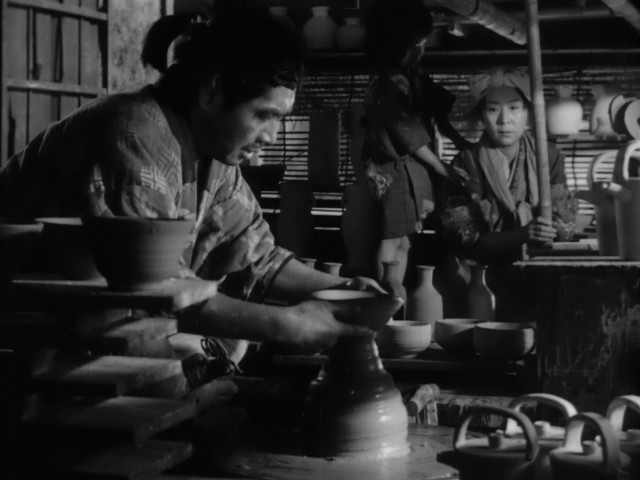
Genjurō (Masayuki Mori) makes his pottery as son Genichi (Ikio Sawamura) and wife Miyagi (Kinuyo Tanaka) look on in UGETSU
UGETSU (UGETSU MONOGATARI) (Kenji Mizoguchi, 1953)
Film Forum
209 West Houston St.
March 3-9
212-727-8110
filmforum.org
 Film Forum is presenting a new 4K restoration of one of the most important and influential — and greatest — works to ever come from Japan. Winner of the Silver Lion for Best Director at the 1953 Venice Film Festival, Kenji Mizoguchi’s seventy-eighth film, Ugetsu, is a dazzling masterpiece steeped in Japanese storytelling tradition, especially ghost lore. Based on two tales by Ueda Akinari and Guy de Maupassant’s “How He Got the Legion of Honor,” Ugetsu unfolds like a scroll painting beginning with the credits, which run over artworks of nature scenes while Fumio Hayasaka’s urgent score starts setting the mood, and continues into the first three shots, pans of the vast countryside leading to Genjurō (Masayuki Mori) loading his cart to sell his pottery in nearby Nagahama, helped by his wife, Miyagi (Kinuyo Tanaka), clutching their small child, Genichi (Ikio Sawamura). Miyagi’s assistant, Tōbei (Sakae Ozawa), insists on coming along, despite the protestations of his nagging wife, Ohama (Mitsuko Mito), as he is determined to become a samurai even though he is more of a hapless fool. “I need to sell all this before the fighting starts,” Genjurō tells Miyagi, referring to a civil war that is making its way through the land. Tōbei adds, “I swear by the god of war: I’m tired of being poor.” After unexpected success with his wares, Genjurō furiously makes more pottery to sell at another market even as the soldiers are approaching and the rest of the villagers run for their lives. At the second market, an elegant woman, Lady Wakasa (Machiko Kyō), and her nurse, Ukon (Kikue Mōri), ask him to bring a large amount of his merchandise to their mansion. Once he gets there, Lady Wakasa seduces him, and soon Genjurō, Miyagi, Genichi, Tōbei, and Ohama are facing very different fates.
Film Forum is presenting a new 4K restoration of one of the most important and influential — and greatest — works to ever come from Japan. Winner of the Silver Lion for Best Director at the 1953 Venice Film Festival, Kenji Mizoguchi’s seventy-eighth film, Ugetsu, is a dazzling masterpiece steeped in Japanese storytelling tradition, especially ghost lore. Based on two tales by Ueda Akinari and Guy de Maupassant’s “How He Got the Legion of Honor,” Ugetsu unfolds like a scroll painting beginning with the credits, which run over artworks of nature scenes while Fumio Hayasaka’s urgent score starts setting the mood, and continues into the first three shots, pans of the vast countryside leading to Genjurō (Masayuki Mori) loading his cart to sell his pottery in nearby Nagahama, helped by his wife, Miyagi (Kinuyo Tanaka), clutching their small child, Genichi (Ikio Sawamura). Miyagi’s assistant, Tōbei (Sakae Ozawa), insists on coming along, despite the protestations of his nagging wife, Ohama (Mitsuko Mito), as he is determined to become a samurai even though he is more of a hapless fool. “I need to sell all this before the fighting starts,” Genjurō tells Miyagi, referring to a civil war that is making its way through the land. Tōbei adds, “I swear by the god of war: I’m tired of being poor.” After unexpected success with his wares, Genjurō furiously makes more pottery to sell at another market even as the soldiers are approaching and the rest of the villagers run for their lives. At the second market, an elegant woman, Lady Wakasa (Machiko Kyō), and her nurse, Ukon (Kikue Mōri), ask him to bring a large amount of his merchandise to their mansion. Once he gets there, Lady Wakasa seduces him, and soon Genjurō, Miyagi, Genichi, Tōbei, and Ohama are facing very different fates.
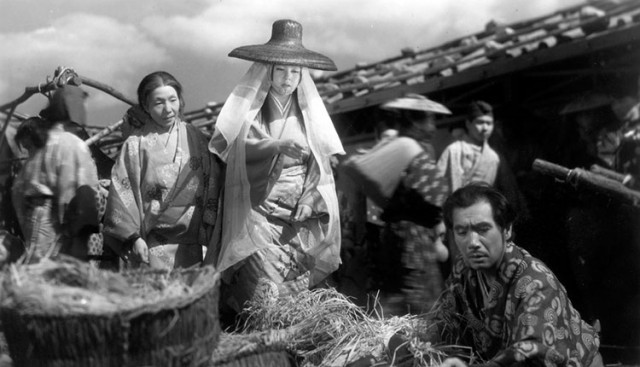
Lady Wakasa (Machiko Kyō) admires Genjurō (Masayuki Mori) in Kenji Mizoguchi postwar masterpiece
Written by longtime Mizoguchi collaborator Yoshitaka Yoda and Matsutaro Kawaguchi, Ugetsu might be set in the sixteenth century, but it is also very much about the aftereffects of World War II. “The war drove us mad with ambition,” Tōbei says at one point. Photographed in lush, shadowy black-and-white by Kazuo Miyagawa (Rashomon, Floating Weeds, Yojimbo), the film features several gorgeous set pieces, including one that takes place on a foggy lake and another in a hot spring, heightening the ominous atmosphere that pervades throughout. Ugetsu ends much like it began, emphasizing that it is but one postwar allegory among many. Kyō (Gate of Hell, The Face of Another) is magical as the temptress Lady Wakasa, while Mori (The Bad Sleep Well, When a Woman Ascends the Stairs) excels as the everyman who follows his dreams no matter the cost; the two previously played husband and wife in Rashomon, which kicked off the Asia Society series. Mizoguchi, who made such other unforgettable classics as The 47 Ronin, The Life of Oharu, Sansho the Bailiff, and Street of Shame, passed away in 1956 at the age of fifty-eight, having left behind a stunning legacy, of which Ugetsu might be the best, and now looking better than ever.

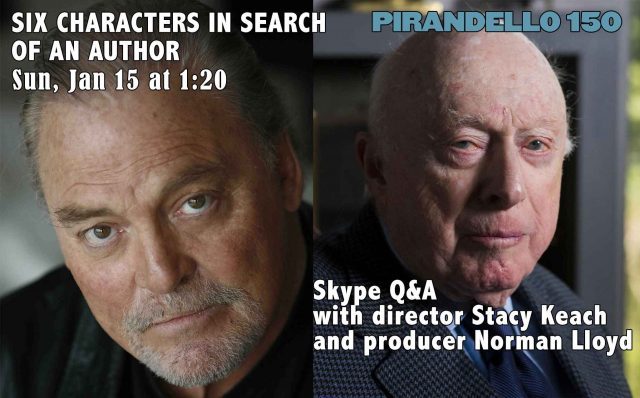
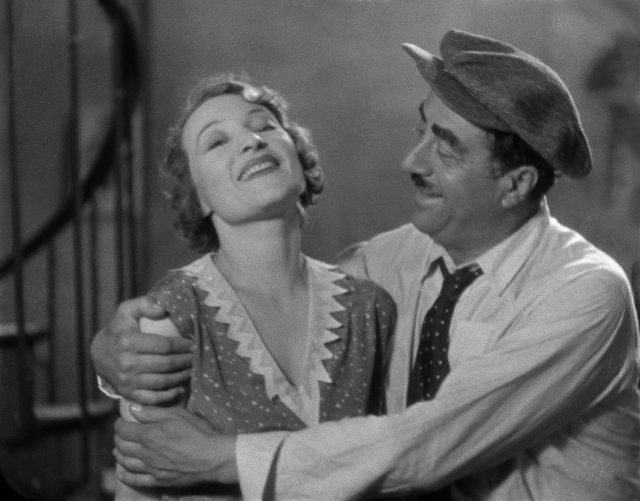
 One of the great trilogies in the history of cinema, Marcel Pagnol’s Marseille Trilogy will be playing at Film Forum January 4-12 in a new 4K restoration, including marathon viewings of Marius, Fanny, and César on January 7, 8, 11, and 12. French novelist, playwright, screenwriter, and director Pagnol penned all three scripts, the first two based on his stage plays, as he investigated love, honor, betrayal, friendship, religion, scandal, and social ritual among the petit bourgeois, the lower-middle-class citizens of the port town of Marseille. Shot on location, the three films, also known as the Fanny Trilogy, center on the big, boisterous César (Raimu in a marvelous comedic tour de force), who runs a local bar with his ne’er-do-well son, Marius (Pierre Fresnay). Marius is childhood friends with the sweet Fanny (Orane Demazis), who declares her love for him only after the rich, successful older merchant Honoré Panisse (Fernand Charpin) requests her hand in marriage. As Fanny’s mother, Honorine (Alida Rouffe), and aunt, Claudine (Milly Mathis), contemplate the potential match, Fanny tries to convince Marius to marry her instead, but he is hesitant, drawn instead to the sea despite his love for Fanny. Directed by Alexander Korda (Rembrandt, The Private Life of Henry VIII), Marius is a rollicking good romance with a surprising dash of naughtiness and featuring an outstanding group of minor characters, including Paul Dullac as Félix Escartefigue, Alexandre Mihalesco as Piquoiseau, Robert Vattier as Albert Brun, and Edouard Delmont as Dr. Félicien Venelle. The camaraderie among the characters is infectious — many of the actors previously played the same roles onstage — with César leading the way, a big, boisterous man whose bravura mix of insults and praise is as potent as the drinks in his bar.
One of the great trilogies in the history of cinema, Marcel Pagnol’s Marseille Trilogy will be playing at Film Forum January 4-12 in a new 4K restoration, including marathon viewings of Marius, Fanny, and César on January 7, 8, 11, and 12. French novelist, playwright, screenwriter, and director Pagnol penned all three scripts, the first two based on his stage plays, as he investigated love, honor, betrayal, friendship, religion, scandal, and social ritual among the petit bourgeois, the lower-middle-class citizens of the port town of Marseille. Shot on location, the three films, also known as the Fanny Trilogy, center on the big, boisterous César (Raimu in a marvelous comedic tour de force), who runs a local bar with his ne’er-do-well son, Marius (Pierre Fresnay). Marius is childhood friends with the sweet Fanny (Orane Demazis), who declares her love for him only after the rich, successful older merchant Honoré Panisse (Fernand Charpin) requests her hand in marriage. As Fanny’s mother, Honorine (Alida Rouffe), and aunt, Claudine (Milly Mathis), contemplate the potential match, Fanny tries to convince Marius to marry her instead, but he is hesitant, drawn instead to the sea despite his love for Fanny. Directed by Alexander Korda (Rembrandt, The Private Life of Henry VIII), Marius is a rollicking good romance with a surprising dash of naughtiness and featuring an outstanding group of minor characters, including Paul Dullac as Félix Escartefigue, Alexandre Mihalesco as Piquoiseau, Robert Vattier as Albert Brun, and Edouard Delmont as Dr. Félicien Venelle. The camaraderie among the characters is infectious — many of the actors previously played the same roles onstage — with César leading the way, a big, boisterous man whose bravura mix of insults and praise is as potent as the drinks in his bar.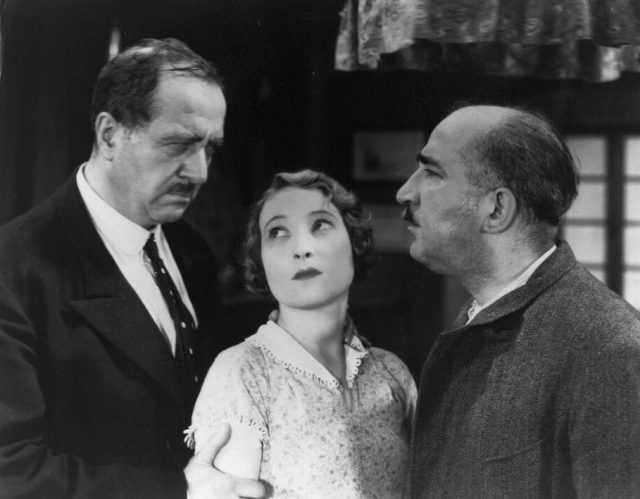
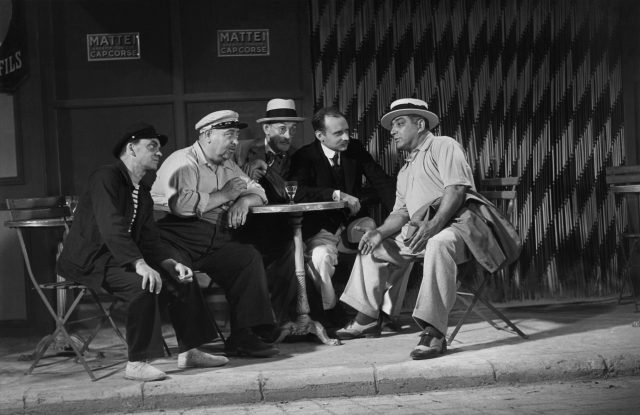
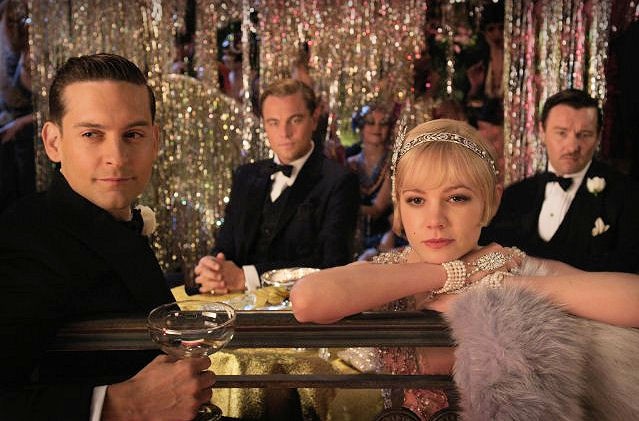
 Baz Luhrmann’s sumptuous version of The Great Gatsby is a dazzling reimagining of F. Scott Fitzgerald’s 1925 novel of old and new money and the American dream. The Australian director and his wife, costume and production designer extraordinaire Catherine Martin, have turned the classic tale into a lush spectacle without losing focus on the main story of life and love during the Roaring Twenties. Leonardo DiCaprio, who played the male lead in Lurhmann’s contemporary take on Romeo + Juliet, is superb as Jay Gatsby, the mystery man previously portrayed by Warner Baxter in 1926, Alan Ladd in 1949, Robert Redford in 1974, and Toby Stephens in 2000, adding a compelling level of vulnerability to the character. Gatsby has built a magnificent palace for himself on Long Island, hosting wild parties that he doesn’t care about; all he truly wants is Daisy (Carey Mulligan), a former love who has married successful businessman Tom Buchanan (Joel Edgerton) and lives in a mansion right across the bay. The villainous Tom is having an affair with the lower-class Myrtle Wilson (Isla Fisher), whose unaware husband, George (Jason Clarke), runs a gas station and garage in the Valley of Ashes. Although a loner, Gatsby befriends his neighbor, Nick Carraway (Tobey Maguire), a young, innocent bond trader who rents a modest home at the base of Gatsby’s enormous estate and whose cousin just happens to be Daisy. As Carraway is sucked into this glamorous, debauched society, which also includes wild and elegant golf champion Jordan Baker (Elizabeth Debicki), he is forced to reexamine his own hopes and dreams as he tries to find his place in the world.
Baz Luhrmann’s sumptuous version of The Great Gatsby is a dazzling reimagining of F. Scott Fitzgerald’s 1925 novel of old and new money and the American dream. The Australian director and his wife, costume and production designer extraordinaire Catherine Martin, have turned the classic tale into a lush spectacle without losing focus on the main story of life and love during the Roaring Twenties. Leonardo DiCaprio, who played the male lead in Lurhmann’s contemporary take on Romeo + Juliet, is superb as Jay Gatsby, the mystery man previously portrayed by Warner Baxter in 1926, Alan Ladd in 1949, Robert Redford in 1974, and Toby Stephens in 2000, adding a compelling level of vulnerability to the character. Gatsby has built a magnificent palace for himself on Long Island, hosting wild parties that he doesn’t care about; all he truly wants is Daisy (Carey Mulligan), a former love who has married successful businessman Tom Buchanan (Joel Edgerton) and lives in a mansion right across the bay. The villainous Tom is having an affair with the lower-class Myrtle Wilson (Isla Fisher), whose unaware husband, George (Jason Clarke), runs a gas station and garage in the Valley of Ashes. Although a loner, Gatsby befriends his neighbor, Nick Carraway (Tobey Maguire), a young, innocent bond trader who rents a modest home at the base of Gatsby’s enormous estate and whose cousin just happens to be Daisy. As Carraway is sucked into this glamorous, debauched society, which also includes wild and elegant golf champion Jordan Baker (Elizabeth Debicki), he is forced to reexamine his own hopes and dreams as he tries to find his place in the world.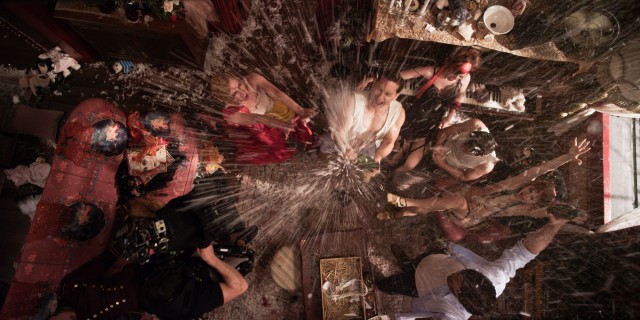
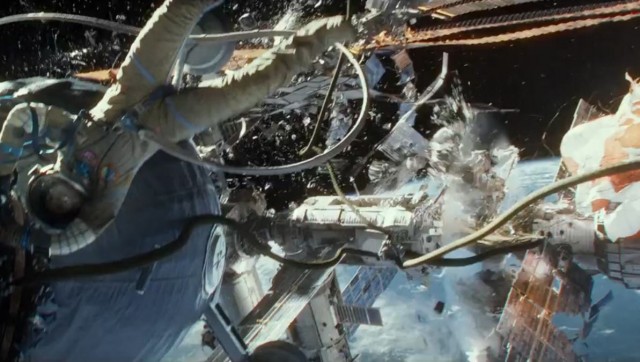
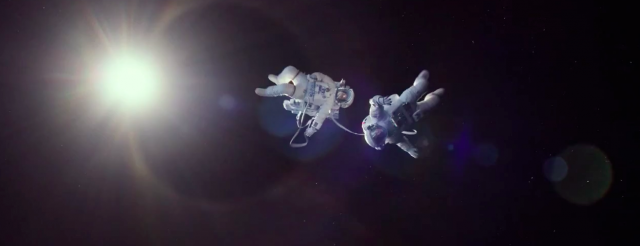
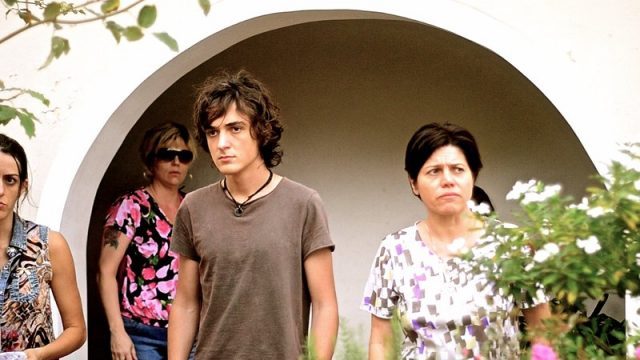
 Brazilian writer-director Anna Muylaert once again intricately explores the nature of class, identity, and family in her fifth feature film, the powerful and poignant Don’t Call Me Son. In last year’s award-winning The Second Mother, Muylaert told the story of a live-in housekeeper who was like a surrogate mother to the family she works for, but things change when her estranged teenage daughter comes to stay with her. In Don’t Call Me Son, a family is torn apart when it is discovered that the mother, Arcay (Dani Nefusi), actually stole her children, son Pierre (Naomi Nero) and daughter Jaqueline (Lais Dias), when they were babies, and the kids’ biological parents have been searching desperately for them ever since and have now found them. Pierre is a seventeen-year-old gender-bending bisexual musician who seems relatively comfortable in his own skin, at least for a seventeen-year-old gender-bending bisexual musician, until Arcay is arrested and imprisoned for kidnapping. She might not have been a model mother, but she was his mother, and he is devastated when he is suddenly forced to move in with his biological parents, Glória (also played by Nefusi) and Matheus (Matheus Nachtergaele), who are overjoyed to have him back but were expecting someone a little bit more traditional; however, Pierre’s new younger brother, Joca (Daniel Botelho), appears to be happy he now has such a cool, if tortured, sibling. Meanwhile, Jaqueline is taken away to live with her real parents. As Glória and Matheus persist in calling Pierre by the name they gave him at birth, Felipe, the teen acts out as he tries to figure out who he is and redefine his place in a world that has been turned upside down and inside out.
Brazilian writer-director Anna Muylaert once again intricately explores the nature of class, identity, and family in her fifth feature film, the powerful and poignant Don’t Call Me Son. In last year’s award-winning The Second Mother, Muylaert told the story of a live-in housekeeper who was like a surrogate mother to the family she works for, but things change when her estranged teenage daughter comes to stay with her. In Don’t Call Me Son, a family is torn apart when it is discovered that the mother, Arcay (Dani Nefusi), actually stole her children, son Pierre (Naomi Nero) and daughter Jaqueline (Lais Dias), when they were babies, and the kids’ biological parents have been searching desperately for them ever since and have now found them. Pierre is a seventeen-year-old gender-bending bisexual musician who seems relatively comfortable in his own skin, at least for a seventeen-year-old gender-bending bisexual musician, until Arcay is arrested and imprisoned for kidnapping. She might not have been a model mother, but she was his mother, and he is devastated when he is suddenly forced to move in with his biological parents, Glória (also played by Nefusi) and Matheus (Matheus Nachtergaele), who are overjoyed to have him back but were expecting someone a little bit more traditional; however, Pierre’s new younger brother, Joca (Daniel Botelho), appears to be happy he now has such a cool, if tortured, sibling. Meanwhile, Jaqueline is taken away to live with her real parents. As Glória and Matheus persist in calling Pierre by the name they gave him at birth, Felipe, the teen acts out as he tries to figure out who he is and redefine his place in a world that has been turned upside down and inside out.